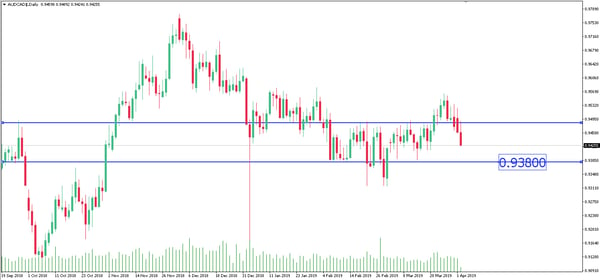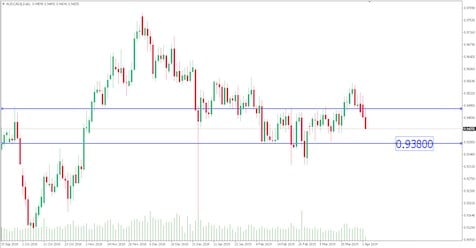Australia’s labour data, which RBA is pinning all hopes on, may not be as strong as it seems, short AUD/CAD?
RBA keeps rates unchanged as widely expected
RBA left interest rates unchanged at 1.50% for the 29th consecutive meeting since mid-2016 which was widely expected. Despite both economic growth and inflation continuing to undershoot forecasts, the decision was not a surprise.
RBA Governor Philip Lowe, however, showed no sign of dovishness by sticking to a neutral bias, emphasising the strength of the labour market and pick-up in wages as a “welcome development.” This is opposed to how its peers such as RBNZ have been echoing dovish tones due to a slowdown in domestic and global growth.
Australia’s labour data might not be what it seems
Australia’s February labour data surprised the market with unemployment rate falling to 4.9%, the lowest since 2011. However, job growth slowed to 4.6k after rising to 38.3k in January. The economy lost 7,300 full-time jobs while adding 11,900 part-time workers. So how did unemployment fall when the jobs added actually fell? This was largely due to lower labour force participation.
Although GDP growth accelerated to 0.6% in the fourth quarter, year-on-year growth slowed to 2.3%, the weakest pace in three years. This was acknowledged by Governor Lowe who conceded that GDP painted “a softer picture of the economy than do the labour market data." Household consumption also fell due to weakness in real household disposable income and the adjustment in housing markets.
Given that the only reason why RBA kept rates unchanged today was largely due to stronger labour data, the weakening in the labour market could change RBA’s language to hard-on dovish. Hence, if economic data on that front starts to deteriorate, we should expect rate cuts to follow.
In a few hours’ time, the Australia annual budget will be released, and tax cuts are imminent which might give the Aussie dollar a boost. However, we believe that any gains from the budget released will be capped due to bond yields heading lower and RBA dovishness.
AUD/CAD has broken its support at the 0.9480 price region and with no support in sight, it could continue to fall towards 0.9380. Canadian dollar has also been strengthening after oil prices made a monthly high and Canada’s GDP surprising the market last week.

Fullerton Markets Research Team
Your Committed Trading Partner















